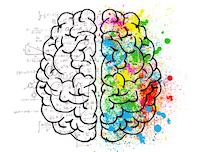I was asked about two teams recently. They worked on the same product, did very similar work, and had similar team composition (team size, skills, etc), yet one of them was noticeably outperforming the other. The company wanted to understand why this was happening and how they could make it better.
For anyone who thinks of people as “resources”, this makes no sense. Surely our people are interchangeable and it doesn’t matter how we put them together into teams or how they might work within that team. Except that it does.
We’re going to consider these teams from two different perspectives
People ≠ Resources
People do not behave like resources. I can move chairs from one room to another and they continue to work just as well as they always have. I can move pens or markers from one place to another and again, there is no difference to ability to do what we need them to. Chairs and markers are resources. We can move them around and it makes almost no difference.
Furthermore, I can mix and match the resources and it makes no difference. I can replace the blue marker with the red marker and can continue to write with either. There are cases where it’s important that I’m writing in red, rather than blue, but that’s a minor difference.
Adding or removing a person from a team will change the dynamics of the entire team, sometimes for a very long time. Adding the wrong person can completely destroy a team. That wouldn’t happen with things that are actual resources. Adding a red pen into a pile of blue pens won’t impact the effectiveness of any of the blue pens.
When we continue to speak about people as if they were resources, we’re conditioning ourselves to believe that they’ll work in a certain way, and then we’re shocked when that doesn’t happen. The words that we use are more powerful than we imagine.
It only becomes worse when we start thinking about “fractional resources”. If I have a jug of water then I can pour half into another container and each container is still equally useful, despite that they have half as much liquid. If I attempt to split a person across two projects then they are not 50% effective on each. If we’re lucky, we’ll get 40% capacity on each project with the remaining time lost to context switching. I’ve seen cases where people get effectively nothing done because they’re just switching back and forth between projects.
Project Aristotle
Let’s revisit the two teams that we started with. Same product, similar work, similar team composition but not operating at the same level of effectiveness. What could explain the difference?
It turns out that Google did research on this exact question, back in 2012. They studied 180 of their own teams to see why some performed so well, and others didn’t, and then published the results of this as Project Aristotle. What the researchers expected to find was that the differences were in the skills of the individual members, perhaps the experience level of those people, or perhaps the tooling that they were using.
What they found instead is that the key differentiators were not in who was on the team, but rather in how the team worked together.
They called out five specific factors:
- Psychological safety: A strong team culture was correlated with each member’s perception of the consequences of taking an interpersonal risk. Those on teams with strong cultures feel safe taking risks in the face of being seen as ignorant, incompetent, negative, or disruptive. In a team with high psychological safety, teammates feel safe to take risks around their team members. They feel confident that no one on the team will embarrass or punish anyone else for admitting a mistake, asking a question, or offering a new idea.
- Dependability: On dependable teams, members reliably complete quality work on time (vs the opposite - shirking responsibilities).
- Structure and clarity: An individual’s understanding of job expectations, the process for fulfilling these expectations, and the consequences of one’s performance are important for team effectiveness. Goals can be set at the individual or group level, and must be specific, challenging, and attainable. Google often uses Objectives and Key Results (OKRs) to help set and communicate short and long term goals.
- Meaning: Finding a sense of purpose in either the work itself or the output is important for team effectiveness. The meaning of work is personal and can vary: financial security, supporting family, helping the team succeed, or self-expression for each individual, for example.
- Impact: The results of one’s work, the subjective judgement that your work is making a difference, is important for teams. Seeing that one’s work is contributing to the organization’s goals can help reveal impact.
Of the two teams we started with, one was heavily collaborating and one was largely working as a bunch of individuals. I’m sure by now, you recognize that the higher performer was the team that was actively collaborating.
Unfortunately, improving that effectiveness will never be as simple as saying “collaborate more”. There are many factors involved in getting a team to actively collaborate and the items called out in Project Aristotle are a great starting point.
I personally find that ensemble work (often called mobbing) is a very easy way to build up the first three of these. The fourth requires an understanding of motivation, and the last involves product strategy.
See also: This episode of the Mob Mentality Show where I get into detail about how ensemble work specifically helps with psychological safety.

